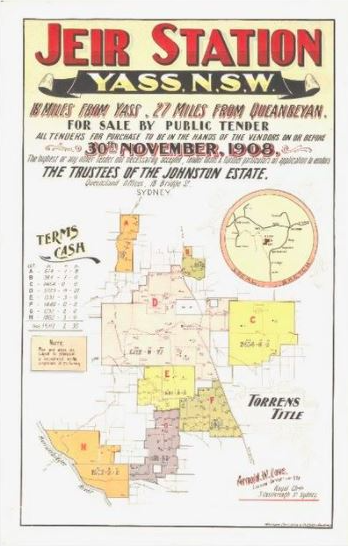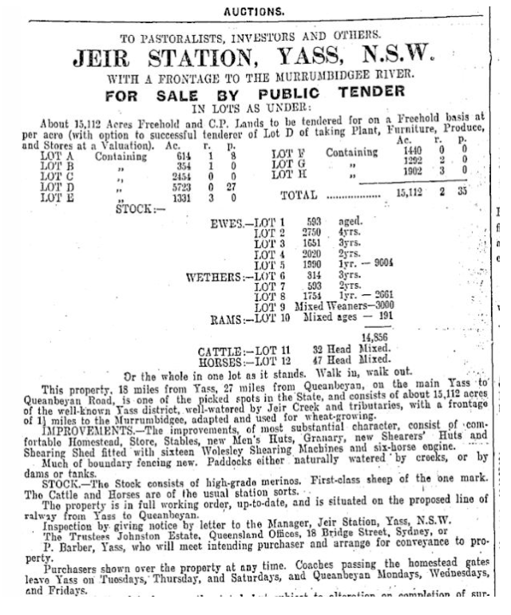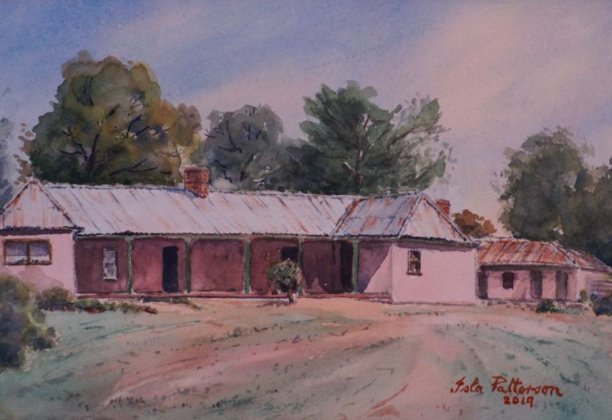
It’s 1905. As night envelopes the magnificent new woolshed, ladies in evening gowns arrive on Cobb and Co stagecoaches. Others have travelled by foot or horseback. As the Queanbeyan Age later reported, more than 300 people danced steadily until daybreak. Welcome to Jeir Station in the heart of Yass, NSW.
Today Jeir Station is home to Jirra Wines, owned by Colin and Kay Andrew. Vineyards surround the historic homestead and produce many a fine drop. In fact, soil testing has revealed Jeir Station has the most fertile soil in the Canberra District grape growing region. Glass in hand, settle in for an almost 200-year journey through the property that features one of the region’s only surviving homesteads from the colonial era.
Robert Johnson, renowned for rounding up stray cattle in the early colonial days in Sydney, took ownership of the land that would become Jeir Station in 1840. His father George Johnston had been granted 700 acres in 1825 for his service to the early colony. Over the years Robert was able to expand his holdings to more than 9000 acres.
The original homestead still remains on Jeir Station today. It was built in 1835 by convict labour - researchers believe a door latch found among historical artefacts may have been used to lock convicts inside their quarters. While the rammed earth floor and attached kitchen via a shared chimney hasn’t stood the test of time, the shingled roof is still intact and protected by a second iron roof.

Pieces of Jeir, quite literally, can be found across the region. Slabs from the blacksmith’s shop on the station were used to build a restaurant at Ginninderra Village. The bricks made on Jeir to construct the Jeir church now form Robert’s Gallery, also in the tourist attraction of Ginninderra Village.
Robert died in 1882 and his son Robert Percy and wife Eliza inherited Jeir Station. Four of their eleven children were born at Jeir and their daughter Emily, who died aged three in 1881, was laid to rest on the hilltop behind the homestead.
By 1890 the Johnstons had stock of 32,000 sheep, 1000 head of cattle and 50 horses. Homes, jobs, schooling, social events, a church and many other establishments could be found at Jeir Station. A fundraising ball in 1905 raised 32 pounds for the Yass Hospital, or $59.92 in today’s currency. An article published in the Queanbeyan Age declared it ‘the best affair of its kind that has ever been held in the district’. It paints the picture of a night filled with ‘sprightly’ music, walls adorned with flags and greenery, and dancers sporting costumes, gowns and fancy dress.

On 30 November 1917, Jeir Station went to public auction in Sydney after being in the Johnston family for around 90 years. Ahead of auction The Chronicle newspaper declared the property completely eradicated of the ‘rabbit pest’ and spruiked the high-class Merino flock, 18,000 sheep and ‘improvements of modern character’.
Patrick Magennis bought Jeir Station in 1918, and took on the enormous job of planning the new Jeir homestead, with the final brick in place by 1921. The two-storey red-brick house, complete with a raised-floor ballroom, was crafted from bricks made on the property using two kilns. It still stands proudly today.

While a skilled breeder of fine wool and competent cattleman, Patrick’s great love lay on the track. In his time there was a racecourse on Jeir and today, that pocket of land is still referred to as the ‘racecourse block’.
When Patrick died in 1943 the property was shared among his five children. After WW1 ended, some land was resumed to accommodate returned soldiers and the remainder was divided.
Today, Jeir Station is made up of the 300 acres surrounding the original homestead. It’s a place of rich history, fertile soil and of course, a whole lot of full-bodied wine.
 Results
Results

